Types of welding processes: all you need to know
There are different types of welding processes, depending on the end-use of the welded part and the material to be welded. Discover the welding methods used by Minifaber and contact us for more information!Welding is the joining technique that ensures the continuity of the metal material between the two pieces to be joined. The result of the operation is the so-called "welded joint", also called more simply "welding".
The way various materials behave in welding operations is defined by their "weldability", which expresses their ability to be welded. This is a rather complex parameter that must summarize many qualities and must be valued from various points of view: material can be considered weldable when it simply allows a joint to be made, but this is quite different from the actual possibility of obtaining an effective and technically valid joint. According to this, the choice of the type of welding process to be applied varies.
On this page, we will deepen:
- The different types of welding processes
- What factors need to be considered when welding
- Types of welding methods
- Welding applications
Types of welding processes
There are several types of welding methods. Minifaber uses the following welding processes.
MIG/MAG welding
MIG/MAG welding is a type of arc welding. To heat the metals and allow welding, it uses the power released by an electric arc that shoots between the electrode (called filler material) and the metal to be welded. It is also a type of continuous wire welding. The electrode is of the endless wire type; during the process, it is fused together with the edges of the metal to be welded. Finally, it is a type of welding process that takes advantage of the action of certain gasses. As a protection for the welding bath, by means of a cylinder, gasses are inserted into the welding bath that protects the arc and the welding zone from the influences of the surrounding atmosphere.
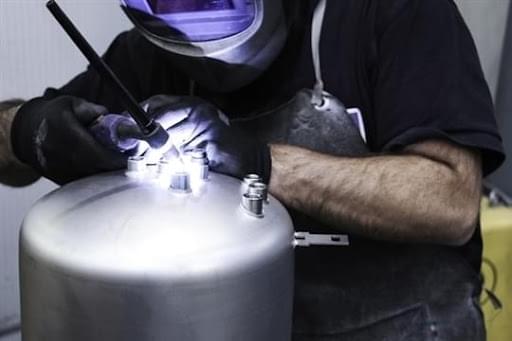
To understand the difference between MIG and MAG welding, we have to consider first the meaning of their names:
- MIG stands for Metal Inert Gas, i.e. welding metal under inert gas.
- MAG stands for Metal Active Gas, i.e. welding metal under active gas.
So, MIG welding uses inert shielding gasses, while MAG welding uses active shielding gasses. Inert gasses do not take part in the reaction and do not change the result, unlike active gasses. In the case of MIG welding, the shielding gasses are Argon and Helium; for MAG welding, on the other hand, oxidizing shielding gasses are used, often mixtures of Argon and carbon dioxide.
TIG welding process
Also the TIG welding process (Tungsten Inert Gas) or GTAW (Gas Tungsten Arc Welding) is an arc welding process with an infusible (tungsten) electrode, under inert gas protection, which can be performed with or without filler metal. TIG welding is one of the most common methods, providing high-quality joints, but requires highly skilled operators.
The procedure is based on a flashlight in which the tungsten electrode is inserted, around which flows the shielding gas which, through a nozzle of ceramic material, is brought onto the melting bath.
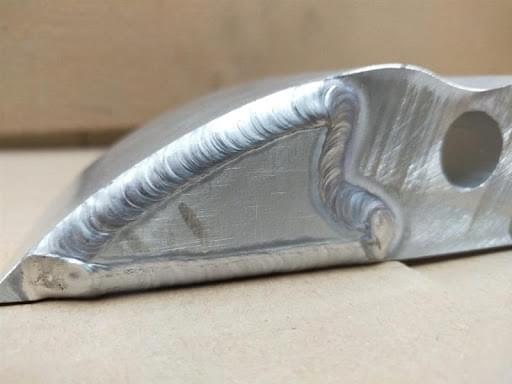
The operator moves the flashlight along the joint to move the melt, while, if filler material is required, at the same time he moves the material rod in such a way as to keep it constantly with the end within the arc and in any case under the protection of the gas.
Resistance welding method
Electrical resistance welding is a process of connecting two conductive metal parts in which heat is provided by the passage of current between two electrodes.
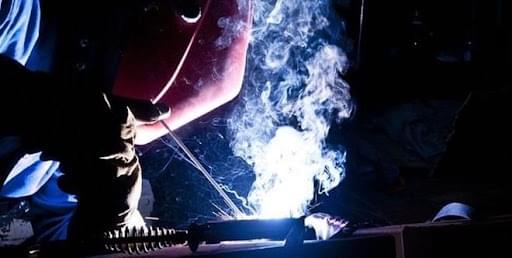
For this type of welding, there is no filler material involved. During the passage of current, the two electrodes forcefully press the two sheets to be welded. The current flow causes the metal to heat up on time and, thanks to the pressing force, the molten core clumps together.
Projection welding processes
Projection welding is a form of resistance welding method and can be considered a variant of spot welding.
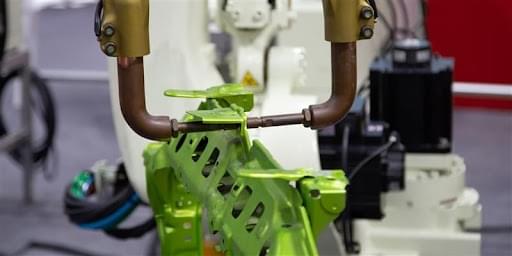
The parts to be welded are clamped between two flat electrodes. Then a very large electric current is passed running through them, thus heating the predetermined contact surface so that it becomes pasty or melts. Due to the pressure applied externally, the parts melt and the weld joint is formed.
Robotic TIG MIG MAG welding process
Types of TIG, MIG and MAG welding processes can also be fully automated. The enormous advantages of automated welding are many, but the most important one is making the welding procedure completely automatic from start to finish after programming the machine. Once the product to be welded reaches the indicated location, the welding robots perform automatic and flawless processing, which is possible thanks to the sophistication of the machinery used.
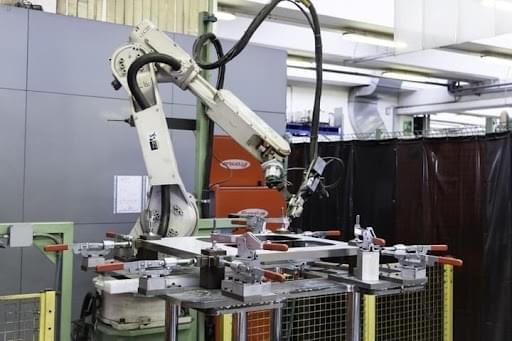
Generally speaking, welding automation is nothing more than robotic arms with the tools required for welding at their ends. Everything is governed by the management software appropriately programmed by the operator to perform all kinds of processing. There is no doubt about the advantage of relieving human operators of the most repetitive and dangerous tasks. The human factor is, therefore, limited to the programming of the machines, which on the one hand reduces the risk of error and on the other reduces the probability of injury. In addition, since the procedure is completely automated, these processes can be replicated identically for the desired number of times.
Laser welding method
The term laser welding refers to a technique that uses a laser beam as a concentrated heat source used to join multiple metal elements together. This process is particularly popular in the automotive industry because it creates a thin and deep weld that is both discreet and highly resistant.
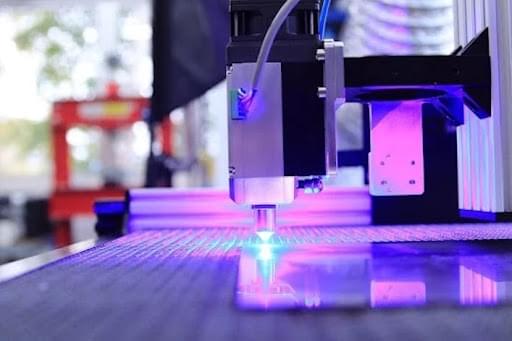
Laser welding makes it possible to obtain resistant and aesthetically pleasing results, with deep and thin strokes. The great difference with respect to more conventional techniques lies in the lack of addition of new material to the metal sheet on which it operates: this means not producing obvious and unsightly residues. However, excellent skills are required, which means that it is necessary to have experienced and well-trained operators in your team as Minifaber has, who knows how to study the exact alignment of the elements, as well as the calibration of the machinery.
Factors to consider when welding
When you are about to consider the types of welding that most applies to your production, you have to consider some important factors.
Metals processed
The choice of the type of welding depends on the metal you are processing. Minifaber welds the following metals:
- Iron;
- Aluminum;
- Stainless steel;
- Copper.
Each metal needs a specific technique: we will work with you to determine the welding method that best suits your production line.
Parameters
The management of the various welding and brazing processes is based on the choice of specific parameters for each type of process. At a general level, in most processes it is possible to identify mainly two characteristic parameters:
- Specific power, which represents the thermal power delivered per unit area of base material, measured in W/cm2;
- Welding speed, which represents the speed of the heat source, measured in cm/min.
Types of welding methods
Manual
In the manual process, the welder manually adjusts the equipment and moves the electrode or the heat source (coated electrode and oxyacetylene welding); in the automatic process, the other hand, a device feeds the electrode or the beam generating source, keeps it at a suitable distance from the workpiece, and moves it along the welding line (submerged arc, electric arc under gas protection MIG/MAG and TIG, concentrated energy welding).
Semiautomatic
The semiautomatic process is a middle ground between the two previous processes: a device feeds the electrode wire or supplies the current while keeping the other parameters constant, while the operator moves the electrode along with the welding line (MIG/MAG and TIG gas-shielded electric arc processes).
Robotized
If the operation is carried out using an industrial robot or a programmable manipulator, it is defined as robotized welding. It is mainly used for MIG/MAG and TIG gas shielded electric arc welding and for laser welding, but also in automobile final assembly plants for the resistance joining of car bodies.
Welding applications
The main applications concern the construction of carpentry structures, more or less complex, and the realization of pressure vessels (boilermaking). The applications in which there are welding processes are extremely diversified: they range from the field of transport (land, sea and air vehicles) to that of structures (bridges, sheds, etc.) up to components. The wide variety of processes and techniques that can be used makes welding a technology that can be applied both in factories, very often using fixed installations, and on construction sites, where the ease with which equipment can be moved is a typical feature of some electric arc processes.

